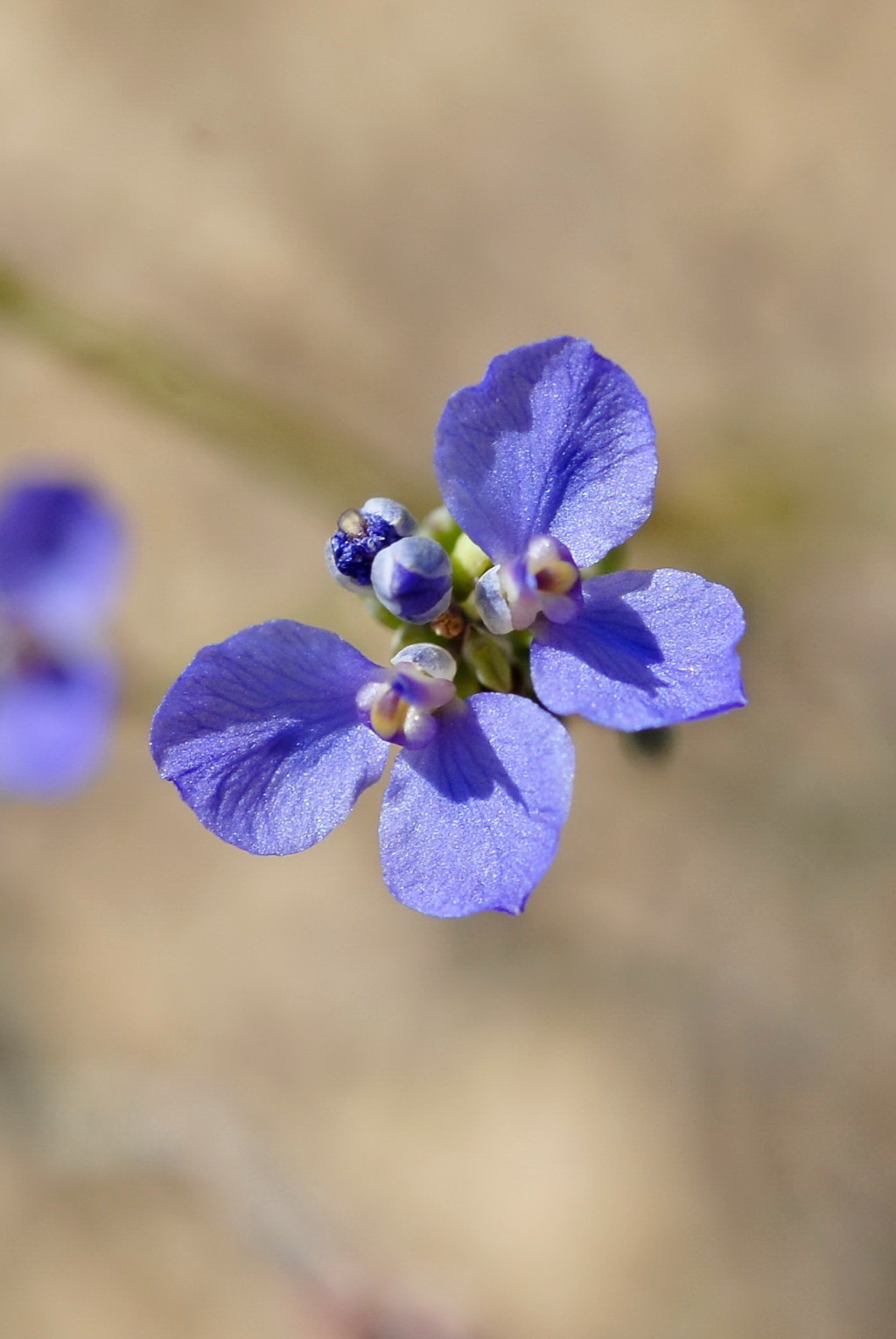Comesperma calymega
Labill. Blue-spike MilkwortSlender glabrous subshrub to c. 60 cm high; stems simple or few-branched, smooth, arising annually from a short woody rhizome, leafy throughout or in c. lower two-thirds (rarely almost leafless). Leaves oblanceolate to linear, 8–25 mm long, 1–5 mm wide, thickish, flat or margins slightly recurved. Flowers blue, in a terminal raceme; pedicels 2–3.5 mm long; sepals free, the outer 3 obovate, 2–3 mm long, the adaxial one slightly pouched at base, wings obovate, c. twice as long as sepals or more, keel hooded and yellow at apex, with 2 lateral subapical pouches, c. 3 mm long; upper petals mauve, oblong, pointed at apex, shortly exceeding keel and united with it to c. midway. Capsule obovate or cuneate, long-tapered to base, 6–7.5 mm long, truncate or shallowly 3-toothed at apex; seeds plumply ovoid, 1–2 mm long, pubescent all over, with longer silky hairs c. 5 mm long around the margin. Flowers Oct.–Feb.
LoM, MuM, Wim, GleP, VVP, GipP, OtP, WaP, Gold, CVU, GGr, DunT, EGL, WPro, HSF, OtR, Strz. Also WA, SA, Tas. Widespread and moderately common in sandy heathlands in the west of the State, extending eastwards to near Bairnsdale.
Some plants of Comesperma calymega from the north-west are virtually leafless (and have in the past been referred to C. defoliatum). This condition seems to be related to rapid growth after fire.
Walsh, N.G. (1999). Polygalaceae. In: Walsh, N.G.; Entwisle, T.J., Flora of Victoria Vol. 4, Cornaceae to Asteraceae, pp. 130–137. Inkata Press, Melbourne.
 Spinning
Spinning

